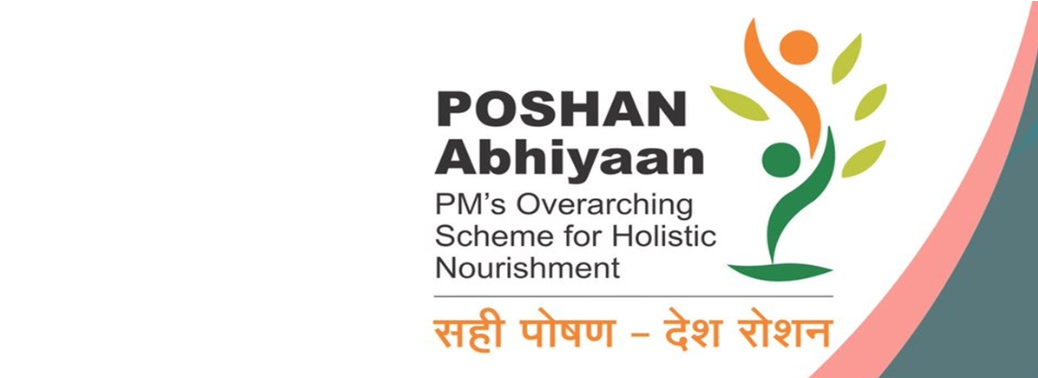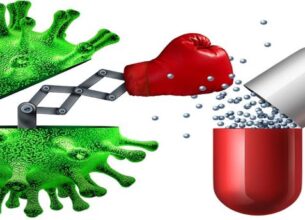POSHAN ABHIYAAN OR NATIONAL NUTRITION MISSION (NNM)
20, Sep 2019

Prelims level : Governance- Policies, Schemes
Mains level : GS-II- Issues relating to development and management of Social Sector or Services relating to Health, Education, Human Resources.
Context:
- A study by Lancet has shown that India is unlikely to meet “Poshan Abhiyaan” scheme
About Poshan Abhiyaan:
- Poshan Abhiyaan is Government of India’s flagship programme to improve nutritional outcomes for children, pregnant women and lactating mothers.
- It was launched by Ministry of Women and Child Development in 2018.
- This initiative is aimed at sensitising public on healthy eating, addressing twin issues of malnutrition and undernutrition and obesity in some sections and also intensifying existing nationwide campaign for ‘malnutrition-free India‘
- Targets:
- Poshan Abhiyaan, the world’s largest nutrition programme, expected to benefit 10 crore people and launched in 2018 by government.
- Aims to reduce stunting, underweight, and low birth weight, each by 2% per year; and anaemia among young children, adolescents and women each by 3% per year until 2022. A special target for stunting is set at 25% by 2022.
Global Burden of Disease Study:
- Poshan Abhiyaan or National Nutrition Mission (NNM) for reduction in prevalence of stunting, underweight, low birth weight and anaemia in women and children by 2022 if there is no progress achieved in improving the rate of decline observed between 1990 and 2017.
- The study points out that India will miss its target for
- Stunting Levels of 25% by 9.6%;
- Underweight Target of 22.7% by 4.8%;
- Desired Low Birth level of 11.4% by 8.9%;
- Anaemia Level Among Women of 39.4% by 13.8%; and
- Anaemia Level Among Children of 44.7% by 11.7%,
About the Report:
- The report is a joint initiative of Indian Council of Medical Research, Public Health Foundation of India (PHFI) and the Ministry of Health and Family Welfare.
For implementation of POSHAN Abhiyaan the four-point strategy/pillars of the Mission are:
- Inter-sectoral convergence for better service delivery
- Use of technology (ICT) for real time growth monitoring and tracking of women and children
- Intensified health and nutrition services for the first 1000 days
- Jan Andolan.
Monitoring:
- As a part of its mandate, NITI Aayog is required to submit implementation status reports of POSHAN Abhiyaan every six months to the PMO.
Background:
What is Malnutrition?
- Malnutrition indicates that children are either too short for their age or too thin.
- Childrenwhose height is below the average for their age are considered to be stunted.
- Similarly, children whose weight is below the average for their age are considered thin for their height or wasted.
- Together, the stunted and wasted children are considered to be underweight – indicating a lack of proper nutritional intake and inadequate care post childbirth.
Malnutrition in India:
- India’s performance on key malnutrition indicators is poor according to national and international studies.
- According to UNICEF, India was at the 10th spot among countries with the highest number of underweight children, and at the 17th spot for the highest number of stunted children in the world.
- Malnutrition affects chances of survival for children, increases their susceptibility to illness, reduces their ability to learn, and makes them less productive in later life.
- It is estimated that malnutrition is a contributing factor in about one-third of all deaths of children under the age of 5.
National Nutrition Strategy:
- Various government initiatives have been launched over the years which seek to improve the nutrition status in the country.
- These include the Integrated Child Development Services (ICDS), the National Health Mission, the Janani Suraksha Yojana, the Matritva Sahyog Yojana, the Mid-Day Meal Scheme, and the National Food Security Mission, among others. However, concerns regarding malnutrition have persisted despite improvements over the years. It is in this context that the National Nutrition Strategy has been released.
State-wide data on malnutrition presented by the Indian Council of Medical Research (ICMR).
- Malnutrition was the predominant risk factor for death in children younger than five in every state of India in 2017, accounting for 68.2 per cent of the total under-5 deaths, translating into 706,000 deaths (due to malnutrition).
- It was also the leading risk factor of loss of health among all age groups.
- These findings also raise concern about a host of policies in India which have been in practice since 1990 to tackle malnutrition, the key ones being Integrated Child Development Scheme launched in 1975, the National Nutrition Policy 1993, the Mid Day Meal Scheme for school children 1995, and the National Food Security Act 2013, as the prevalence of stunting, wasting and underweight remains high.







